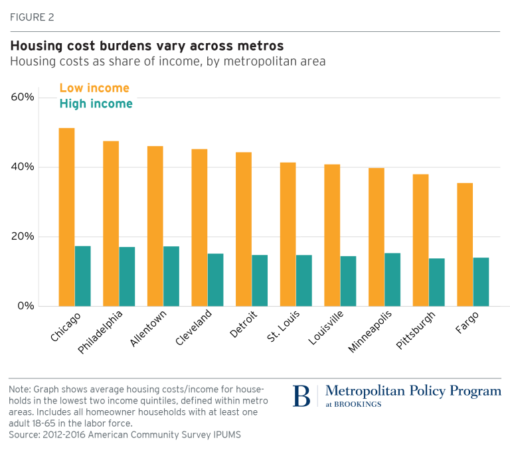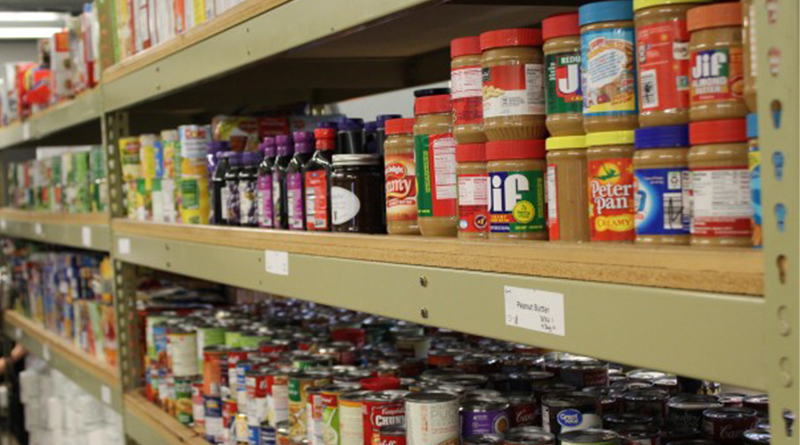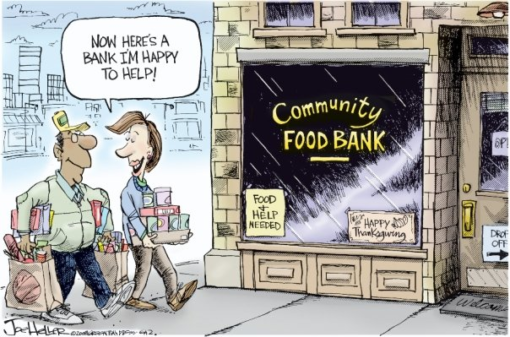This was written by Corvin, one of our student interns. The opinions expressed herein do not reflect those of Civitas other than respect for the value of open dialogue.
It seems that many people think that food banks are the long-term goal to get rid of food insecurity, but that seems illogical. You might be thinking, wouldn’t food banks lowering the amount of food insecurity be a good thing? While yes it would, food banks should only be a small step of the bigger goal; that goal should be that people can afford enough quality food for themselves to live off of. Now when I say quality I don’t mean gourmet, what I mean is that families don’t just get fast food because it is cheap enough to fit into a very limited budget.
What I believe to be the most common cause of food insecurity is high unemployment and/or low wages. High unemployment does not mean that there is a lack of jobs; however, recently there have been calls of a “workers shortage” all throughout July 2021. This cry makes it seem like there aren’t any people looking to find some work. In some cases this might be true, but from what I’ve seen it just means that there has been a lack of workers that are signing up to get paid the low wages that businesses are wishing to offer. This directly correlates to the low wages aspect of this problem. The ability to get a career is severely hindered when you don’t have at least an associate’s degree, so people are often left to try to make by with jobs like minimum wage or on the upper side working at somewhere like Amazon which pays $15 an hour.

The other power player in the food insecurity game would be a lack of availability for affordable housing. The graph above shows the percentage of people’s incomes that housing takes. You can see that Saint Louis is one of the cities shown and for the sake of this I’m solely focusing on the low income section in orange. According to the Brookings Institution, “households spending more than 30% as ‘cost burdened’, and those spending more than 50% as ‘severely cost burdened.’”1 This would mean that people that are low income spend about 13% more than a “cost burdened” family. Realistically it just means that almost half of a given low income family’s money is being spent on housing, which limits the ability for adequate transportation, hygiene, clothing, and food.
Now that I’ve explained what I believe to be the main causes behind food-insecurity, I’m going to talk about personal experience at a food distribution center. The food distribution center I go to is called Webster Rock Hill Ministries. When I arrived on my first day I was shown around the facility and started learning about where things are and who everyone was because there are about twenty volunteers. The next day I came back and started learning to pack the commodity boxes and the food bags (canned and packaged beef/chicken, fruits, and nuts).
There is also a monthly food drive where you show up and can receive a box of goods. I went with another volunteer to get boxes for it during one of my first few visits, and we obtained and folded them. After folding about eighty boxes, we started to bring out the dried goods and setting them nearby since the day was almost up. It’s been about 3 weeks since my first day and I have helped make dozens of people’s donations and I believe that I’m helping them, but what I’ve been doing there isn’t going to get any of these people out of food insecurity.
I have a going away question for anybody reading this: do you have any recipes that use black beans, and if so could you share them in the comments?
“When I feed the poor, they call me a saint. But when I ask why so many people are poor, they call me a communist,” – Hélder Câmara a Brazilian Archbishop.



Pingback:Index of 2021 Intern Student Blog Posts - CIVITAS-STL